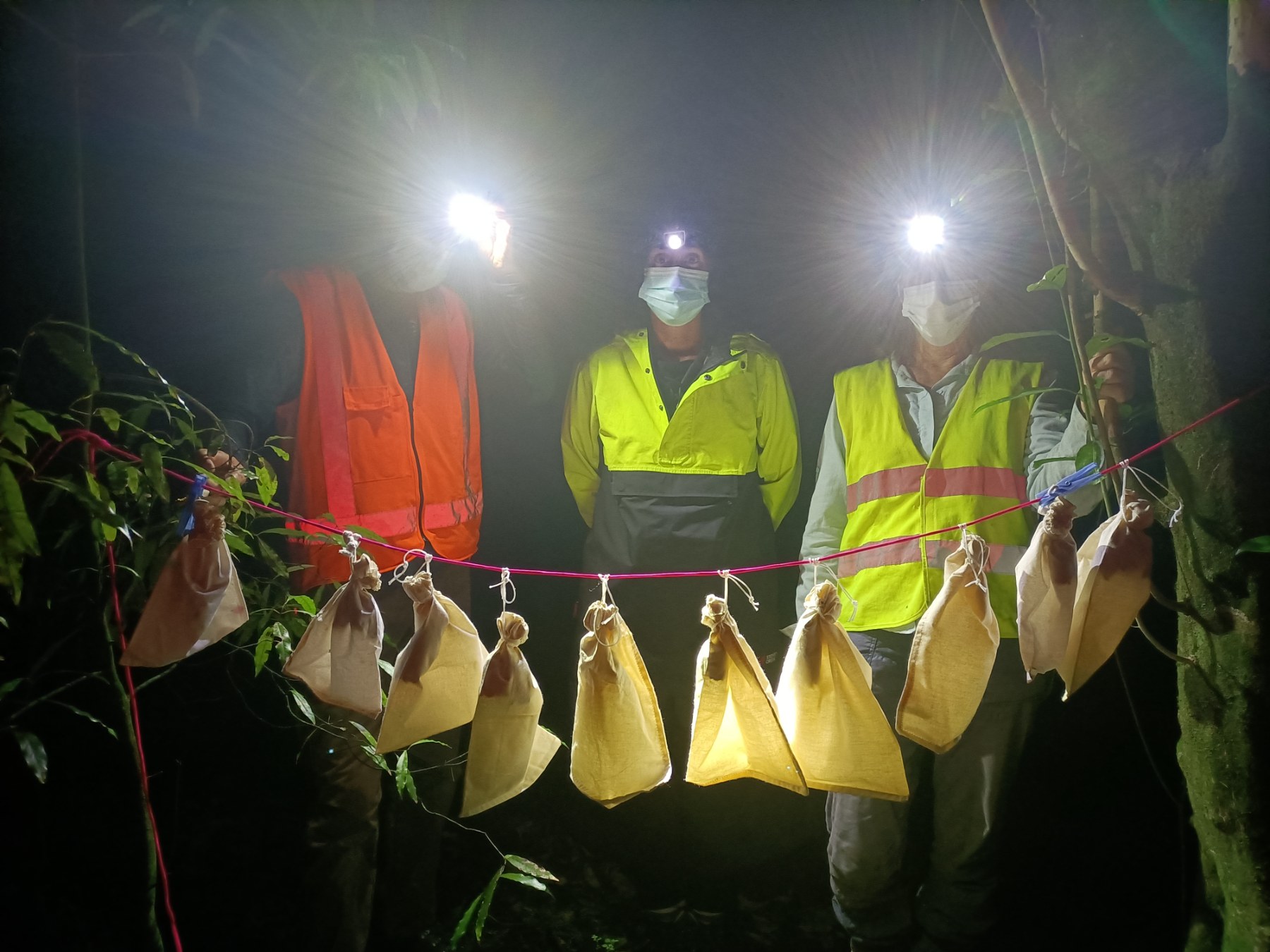Bat Monitoring Report 2024-25
By Nick Eade, Forest & Bird Te Hoiere Bat Recovery Project Team Member
Overall, the monitoring from the recent 2025 season at the Pelorus Bridge and Rai Valley reserves is very positive.
It showed that the bat population is larger than previously thought and is possibly responding positively to the increased predator control within the reserves. Further ongoing annual mark/recapture monitoring will help firm up estimates of population size and also show if the population is in fact increasing over time.
Through the summer season, bats are active at night, foraging widely for insects then they settle at dawn in a roost hole in a tree for the daytime rest period, before emerging again at dusk. They generally roost in small to large groups and use a different tree every night.
More than 70 maternal roost trees have been identified in the Pelorus Bridge Scenic Reserve and Carluke, Ronga and Brown reserves near Rai Valley township and a number of other likely roost trees also identified. Knowing the location of roost trees can help with targeting predator control efforts.
There are two ways that are used to monitor the long-tailed bat populations known to live in the Pelorus/Rai valley areas, acoustic surveys, and mark/recapture monitoring.
Acoustic Surveys
Acoustic surveys using equipment designed to pick up and record bat echo location signals can be set up in specific locations to detect the presence of long-tailed bats flying nearby during the night hours when they are active. These devices show the timing and frequency of the bat passes and can be analysed in various ways. The usual overall result is shown as “the average number of passes per night” over a two-week period.
Two long term acoustic surveys have been established in the Te Hoiere/Pelorus area, one within the 300-hectare Pelorus Bridge Scenic Reserve (PBSR), and the other over the whole 90,000 hectare catchment which includes sixteen sites on private land and eight on public conservation land. The Pelorus reserve survey is annual while the larger catchment wide survey is intended to be carried out every 2-3 years to show long term changes.
This summer season the annual PBSR survey was carried out in December and showed similar results to other years. Bats were detected at all 24 locations with the higher numbers at the northern end of the reserve around the public walking tracks and swimming and camping areas, while lower numbers were detected in the southern part of the reserve at the second waterfall area and around the Trig K track area.
The catchment-wide survey was not carried out this season.
Two smaller acoustic surveys were carried out to investigate areas of interest from previous catchment survey results. These were the Tinline and Long valley areas. Both were surveyed in November.
The Tinline survey showed that bats are flying over the hill from Pelorus and foraging up the river at the lower end, but are not present further up the valley, suggesting that they use the valley to forage from Pelorus rather than being resident. The Long Valley, which is quite a distance from the Pelorus and separated by two high ranges, showed that bats were present in low numbers. It was difficult to draw any conclusions as to whether the bats were resident in the valley or flying there to forage from Pelorus.
Mark/re-capture bat monitoring
This method involves catching the bats in harp traps, fitting all captured bats with numbered aluminium bands for permanent identification, and radio tracking some of them for short periods over the trapping season. Radio tracking allows the bats to be followed to their roost trees and enables large groups of bats to be caught and banded.
This season a total of 122 individual bats were caught at Pelorus, with 43 of those being recaptures from previous seasons and 79 being new captures. Of the 122 individuals, 49 were breeding females and 62 were juveniles. The previous highest catch at Pelorus was 86 individuals in 2024.
Due to the demographics (more juveniles than breeding females caught), and the fact that there were still a number of new captures being made at the end of the season, we know that this is not the total number of bats in this area. Increasing the intensity of predator control over part of the reserve area from November 2024 may have contributed to higher survival rates of bats this season.
At the Rai Valley reserves (Carluke, Ronga and Brown), a total of 80 individual bats were caught with 26 being recaptures and 56 being new captures. Of the 80 individuals, 31 were breeding females and 36 were juveniles. The previous highest catch rate in this area was 45 individual bats in 2023. A new intensive predator control programme at Carluke and Ronga reserves over the past year is likely to have contributed to higher numbers of bats surviving.

Forest and Bird bat specialists from left to right Grant Maslowski, Jen Waite and Nick Eade with 45 bats captured, bagged up and awaiting processing in the depths of Carluke forest. Credit: Daria Erastova

